Juniper "Holger": description, planting and care rules
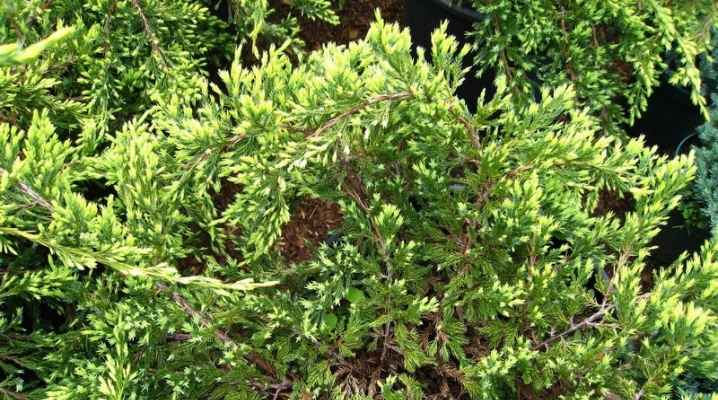
Juniper "Holger" can be found both on the site of a novice summer resident and in the garden of an experienced gardener. It is a compact variety with dense spreading branches that attracts attention with its elegant crown and unusual color. This variety was loved not only for its extraordinary appearance, but also for its unpretentious care.
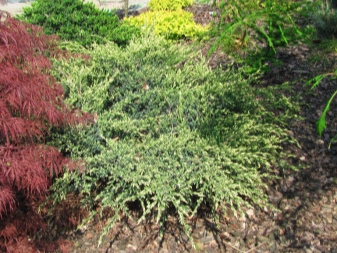

Description
Juniper scaly "Holger" grows in East China and on the island of Taiwan, and the plant is native to the Himalayas. it undersized perennial, the height of which reaches a maximum of 1 m. At the same time, the crown width can grow up to 2 m. The shrub has sharp hanging branches of a horizontal arrangement. The species belongs to slow-growing, the annual growth is only 10-12 cm.
The needles are tough, sharp, distinguished by a silvery-green color with a blue tint, young specimens have a rich light green color. This is an evergreen culture that continues to delight the eye with its beauty in the winter, and in the spring the needles are filled with a golden hue. The fruits are compact gray cones resembling berries.
It is a winter-hardy variety that tolerates frosts down to -34 degrees. The shrub withstands gusts of wind and sunlight - the needles do not fade under the influence of ultraviolet radiation, however, it is recommended to protect young samples from the sun, otherwise burns may appear. In addition to its decorative properties, the tree has insecticidal and phytoncidal qualities, it purifies the air, fills the garden with a pleasant aroma.
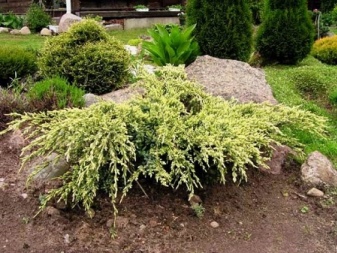
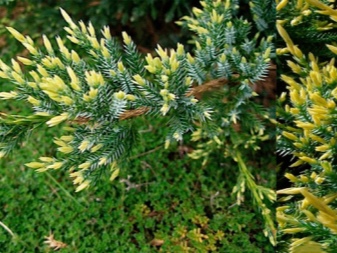
How to plant?
The variety belongs to light-loving crops, therefore planting should be carried out in a well-lit area. The most preferred type of soil is sandy loam or loam. The soil should be moderately moist and contain nutrients. If the soil is heavy, clayey, it is recommended to supplement it with a mixture of peat, sand and garden soil.... You can also add coniferous soil containing useful organic matter.
Broken brick or sand is placed at the bottom of the planting pit as drainage. Juniper is quite tolerant to drought and can develop in poor soil, but excess water can destroy the plant, therefore do not neglect the organization of the drainage system.
The soil nutrient mixture may contain humus, sod soil, peat, sand.
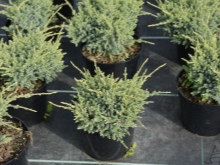
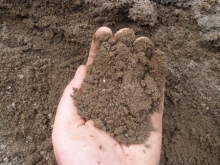
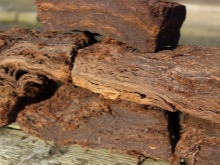
To improve the composition, you can add Kemira-universal and nitrophosphate. In order for the seedling to better adapt to new conditions, you can add a growth stimulator "Epin" under it. After planting, the young specimen must be wrapped in material to protect it from direct sunlight. A distance of at least 0.5 m should be maintained between two landings.
Growing varieties from seeds is allowed. Planting material is collected at the end of summer, planting is carried out immediately, however, the first shoots will hatch only after 2-3 years. The fact is that juniper seeds have a dense shell, which slows down germination. For uniform germination, the grains can be cleaned from pericarp and scarified before planting. Gardeners advise adding a small amount of soil from under the juniper plantings to the seed furrows to introduce mycorrhiza.
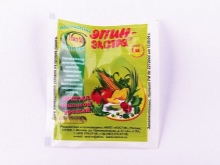
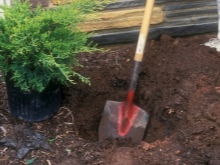
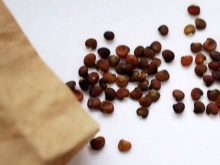
Care features
It is not difficult to take care of a planted specimen, even a novice gardener can cope with this. The basic rules for leaving are as follows.
- Watering is carried out depending on seasonal precipitation. Normally, the seedling should receive 10 liters of water per day. If there are no reservoirs nearby, then in the hot summer the shrubs are watered in the morning or evening by sprinkling.
- Young bushes under the age of 3 years need fertilization. Mineral complexes are suitable as additional nutrition. Adult trees do not need to be fed. It is impossible to use cow or bird humus for coniferous crops, as they have a detrimental effect on the condition of the roots.
- Mulch the site immediately after planting the shoot. As a mulch, tree bark is suitable. This process is essential for maintaining moisture in the soil. In autumn, it is recommended to supplement the layer with peat or hay. In the spring, the mulch needs updating.
- It is important to regularly loosen the planting site until the lower branches grow. All weeds are removed during loosening. The procedure is carried out very carefully, since the culture has a superficial root system, and it is important not to injure the young roots.
- To preserve the decorative effect of the crown, light pruning is carried out in the spring. The main thing is to have time to complete the procedure before the start of sap flow. It is important not to forget about a sanitary haircut, during which all damaged, broken, frozen branches are eliminated.
- In autumn, the seedlings are spud and covered with straw. Adult trees are watered abundantly. This is a frost-resistant variety, but its bark cannot boast of its strength, its thin structure can collapse under a snow pile, so the branches are raised and attached to the trunk for the winter.
From above, it is recommended to cover the shrub with spruce branches or fabric material.

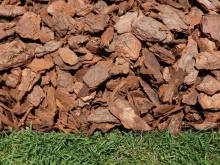
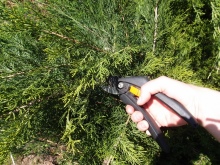
Reproduction
Scaly juniper can be bred in several ways.
- Generative. You can collect seeds from the shrub that have the varietal qualities of the parent plant.
- Layers. When propagating, the lower branch is pressed to the surface of the earth and buried in soil; by the fall, the selected shoot should take root.
- Cuttings... For this method, cuttings 12-15 cm long are cut from the bush along with a part of the wood. Only two-year-old shoots are suitable for collecting planting material. When doing this, choose a plant that is healthy and robust.
- Graft. The most rare method. Grafting of a tall seedling on the stem is possible.



Diseases and pests
This variety is characterized by good immunity against disease and insects, but under improper growing conditions, these problems do not bypass the juniper. For example, if planted close to an apple tree, the juniper may rust. If watering rules are not followed, rot and fungi may develop. The presence of the disease is indicated by the condition of the needles and branches. They begin to turn yellow, dry, die off. For prevention, the soil under the bushes and the crown are sprayed with "Fitosporin" or "Fundazol".
If ulcers and gray spots appear on the bark, then it can be assumed that the plant has become a victim of bacterial cancer. There is no cure for the disease, so the diseased specimen is dug up and destroyed, and the earth in its place is treated with a solution of copper sulfate.
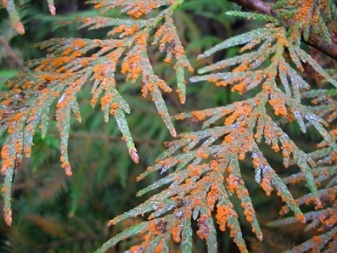
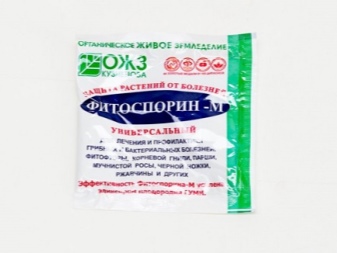
Of the insects, the following pests like to feast on the Holger variety.
- Sawfly. "Karbofos" will help to cope with it.
- Aphid. Ants become the source of the spread of aphids, so you first need to get rid of them. To do this, remove all areas where ant colonies are observed.
- Shield. It attacks the tree in drought. The most effective method of dealing with the scabbard is insecticides.
As a preventive measure, it is recommended to periodically treat the shrub with preparations that contain copper.
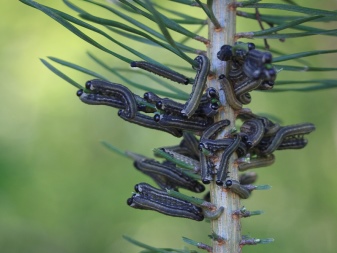
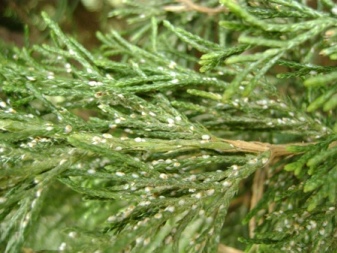
Application in landscape design
The juniper of the presented variety can be used both in single plantings and in collective plantings. It looks aesthetically pleasing among green spaces and in rocky terrain.The property of preserving the beauty and freshness of the needles all year round allows you to create an amazing design even in winter - the silvery needles look fabulous against the background of white snow.
Picturesque pictures are obtained by combining shrubs with heather, erica, ground cover forms of pine. The magical image in the design of the garden will be complemented by bushes with yellow, white, red roses. Juniper will harmoniously look next to ornamental cereals and wild perennials. It is allowed to grow the variety as a container crop for landscaping terraces, roofs, loggias and balconies.
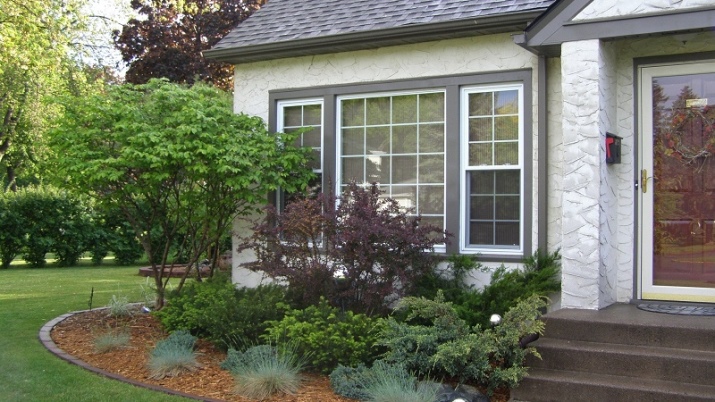
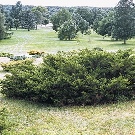

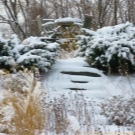
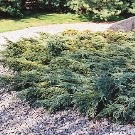
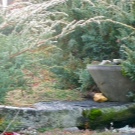
In the next video you will find more information about the Holger juniper.



































































The comment was sent successfully.